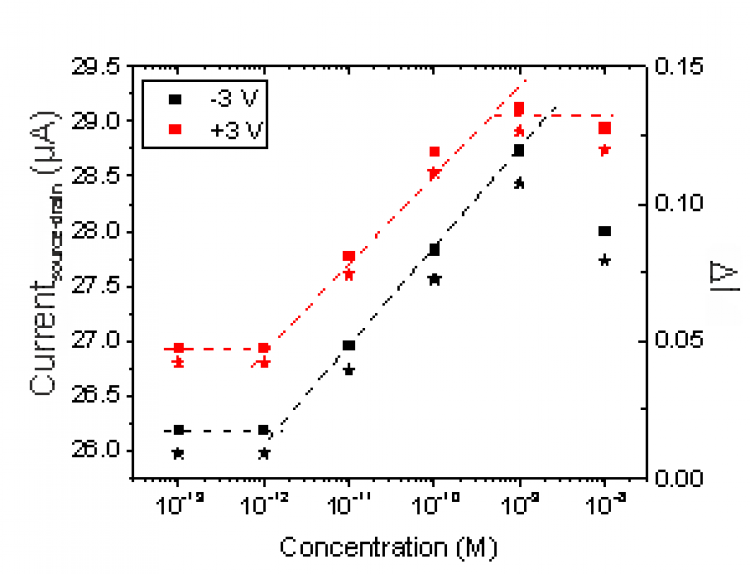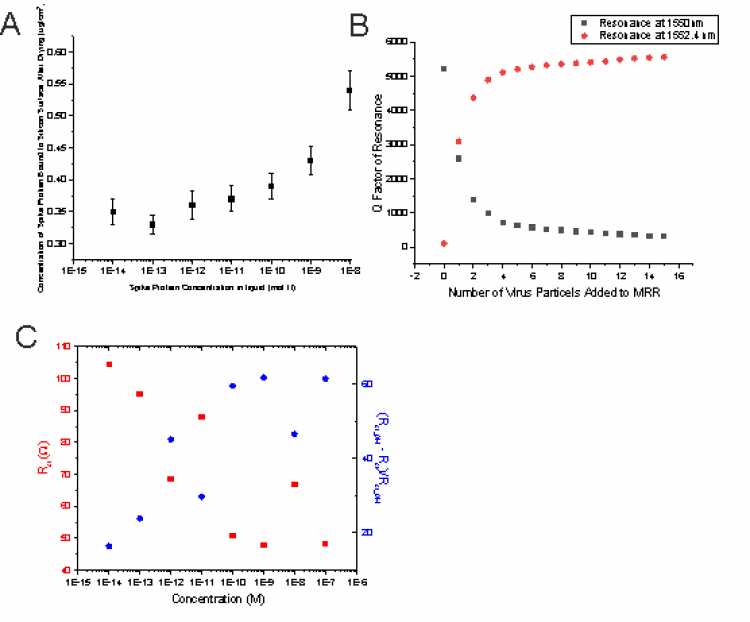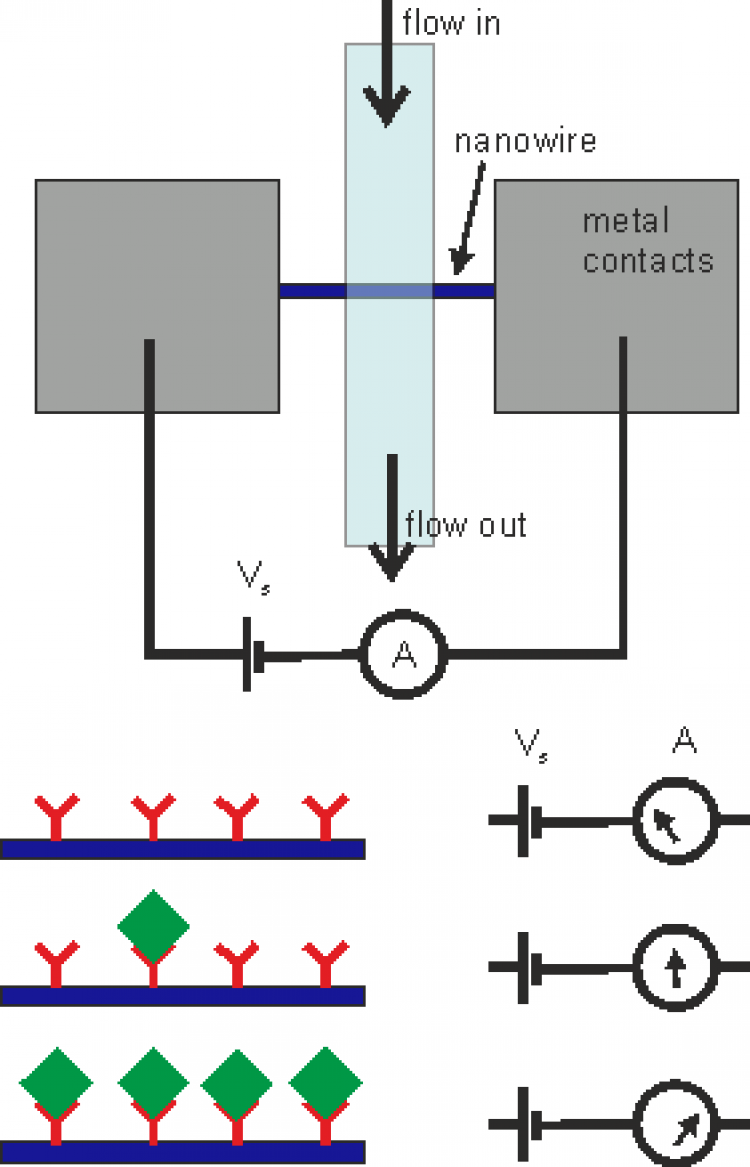常州江苏大学工程技术研究院
Changzhou Engineering and Technology Institute of Jiangsu University
Welcome to Changzhou Engineering and Technology Institute of Jiangsu University!
International Cooperation
Project background
We are developing a sensory platform capable of rapid, i.e. less than 5 minutes, detection of a wide range of potential targets (viruses, toxins, proteins, etc.). Recently, we have successfully used field-effect transistors functionalized with an aptamer to detect the spike protein associated with SARS-Cov-2 and have also achieved similar results for the detection of vascular endothelial growth factor (VEGF). The use of aptamers is a novel approach, which enables the target molecule to reside much closer to the sensor than in conventional antibody-based sensors. The close proximity provides higher sensitivity, while aptamers have similar selectivity as antibodies. Long term the aim is to develop a range of rapid diagnosis tests suitable for at home / in community use for the detection of single targets as well as a more comprehensive analytical tool capable of screening for multiple targets simultaneously. We have so far realized aptamer-based sensors using a number of different approaches including; electrical methods (Si, ZnO and nanowires transistors), optically (via micro ring resonators and fluorescence based techniques), and using electrochemical approaches (impedance spectroscopy). Using a wide range of approaches enables us to better understand the aptamer-target interaction and obtain an optimum approach for each required target.
Technology summary
Recently a number of so-called lab-on-a-chip bio-sensors have been demonstrated for the detection of a wide range of target proteins and molecules (including viruses, toxins). While these sensors have been realized on a range of platforms (electrical, optical, etc.) they typically work by using an antibody to attach the target protein to the sensor. The selectivity in these devices is created using the antibody while the sensitivity can be enhanced by varying the dimensions of the active area. Currently a major restriction for the use of antibody-based biosensors is the size of the antibodies, which is similar to that of the proteins/ molecules that they are aimed to detect. This results in a relatively small change in the physical parameter that is being studied. In our work we are looking to utilize aptamers instead of antibodies. Aptamers consist of short DNA, RNA or peptide strands. Utilising their conformation and charge distribution the aptamers are capable of very specific binding to individual proteins. As they are significantly smaller than antibodies, the result is that a protein bound via an aptamer will create a larger change in signal level.
Benefits/Advantages
One of the key advantages to using aptamers for bio-sensors instead of more traditional antibodies is their much smaller size. This means that it becomes possible to use this system with physiologically relevant liquids and helps to obtain a higher sensitivity. In addition, aptamers are significantly cheaper and more stable than antibodies resulting in lower cost and longer lifetimes for the end sensors. By investigating a range of sensing techniques (electrical, optical and electrochemical) we will be able to optimize the sensor for any given application. This approach will also enable us to potentially incorporate multiple detection strategies on the same device to enhance the performance (provide less false positive/negative results).
Market application
In general, it can be extrapolated that if an aptamer can be found that specifically binds to any required target an aptamer-based sensor is feasible. We foresee two potential markets for these sensors: 1. Rapid, low cost sensing for use by individuals at home /community settings. A single sensor would be used for a particular target with no need for trained medical personal (in a similar way to current lateral flow / pregnancy tests). 2. Medical diagnosis – by developing a multiplexed array of sensors, each with different aptamers (for different targets) a wide range of possible conditions, diseases can be tested for simultaneously from a single sample (blood, saliva, urine, etc.) While this approach would be more complex and expensive, likely requiring some medical / technical knowledge it would still provide a step change in current medical diagnosis by being able to screen for the presence of multiple diseases simultaneously.
Ways of collaboration
Joint technical collaboration – We are looking for potential collaborators and partners who may be able to help advance this work. Particular areas we are interested in are: 1) Aptamer Discovery Techniques (to enable more target protein / molecules to be detected), 2) End Users (i.e. health care for potential trials, feedback, discussion) 3) Semiconductor Material Growth/Development to enable other possible materials to be tested as transistor/resonators for sensing (i.e. Graphene, GaO, Polymers, etc)
· Technology commercialization in China – We are also interested in speaking with potential commercial / industrial partners to help take prototypes to the next level.
· Technical consultation
· Capital seeking



